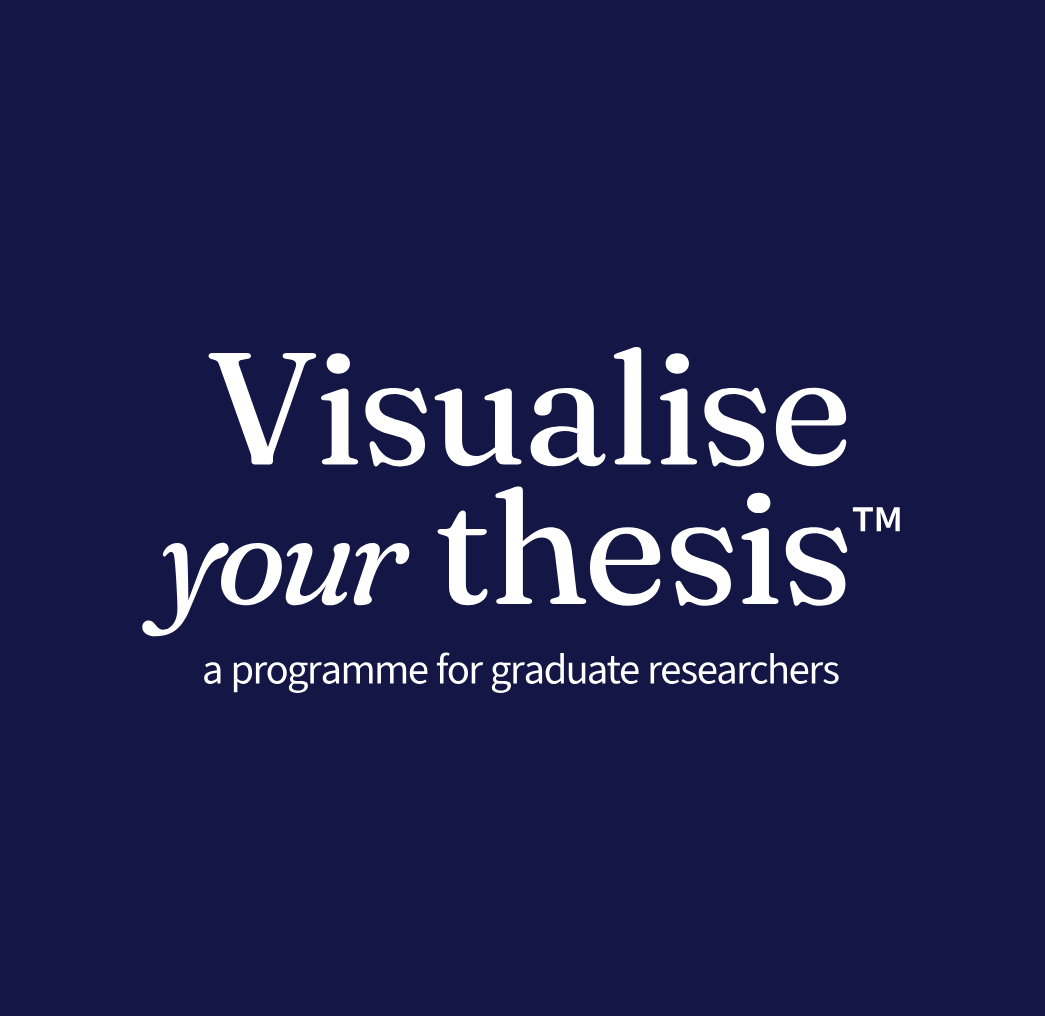The Visualise Your Thesis competition encourages graduate students to develop communication skills and gives them an outlet for exposing their research in a succinct and engaging way.
Visualise Your Thesis is a competition where graduate students create 60-second presentations of their thesis using a variety of creative methods from stop-motion films to animations. The objective is to encourage students to consider how they would communicate their research in a succinct and effective way, particularly when time is limited and the audience is the general public.
Started at the University of Melbourne two years ago, the competition now runs locally in 21 universities around the world. The winners of each local competition progress to the international competition where their presentations are uploaded to the Visualise Your Thesis repository, https://visualiseyourthesis.figshare.com/. There were three prizewinners in 2019 and three prizewinners and two highly commended in 2020, each with a different presentation technique and varying levels of experience using storytelling to describe their research project.
For many participants, an interest in theatre, photography, videography, art, and music played a key role in determining what medium of storytelling they chose to use for their presentation. Annaclaire McDonald, the first place winner of 2019’s competition, wrote a song for her presentation on how plants absorb heavy metals from contaminated soils and what this means for food safety. “I wrote a song and found out how to do animations around it. It was really cool for me to be able to combine my science background with my creative side,” said Annaclaire.
Similarly for 2019’s second place winner, Donovan Garcia-Ceron, his interest in stop-motion video informed his choice of presentation describing his research: understanding how extracellular vesicles lead to fungal infestation in plants. “It wasn’t until I saw a video called Fresh Guacamole by PES, where a professional photographer creates stop-motion videos using objects that are similar to the ingredients in guacamole but have no relationship to the ingredient whatsoever. The playfulness of that video inspired me to create my own stop-motion video for the competition,” said Donovan.
Ané van der Walt, 2020’s second place winner, is in the unique position of being based simultaneously in the Department of Design and the Indigenous Studies Centre, weaving art into the fabric of her research itself. Her presentation, an animation depicting her research archiving a range of scientific and ephemeral information about a significant Aboriginal landscape in western Victoria. “The Visualise Your Thesis format was really attractive to me having a design background and having the thesis situated in the School of Design, as well,” said Ané. “The decision to visualise it in that way with the rotoscope video was because I had done it during my undergraduate and I wanted to dip a toe back into that style of animation.”
Maleen Jayasuriya, third place winner of the 2020 competition, created an animation of his research, centered around using self-driving technology to improve the function of mobility scooters. Maleen used humour and his interest in filmmaking to create his presentation: “I’ve always wanted to learn how to create animations and this has expedited my learning of these skills,” said Maleen. “I really enjoy academia and teaching. It would be great if I can take all of the animation and communication skills I’ve learned and incorporate them into my teaching.”
For Gwendolyn Foo, one of 2020’s highly commended entries, the experience of distilling her thesis on using robots to reduce electronics waste was particularly introspective: “It has helped to remind me of the core purpose of my research and inspire myself to keep going,” said Gwendolyn.

Not only does creating presentations from research enhance communication skills and expand the creative skillset of participants, but it also broadens the scope of new and exciting opportunities professionally. Nicola Rivers, another highly commended winner in 2020’s competition, has been exposed to several new opportunities as a result of participating in Visualise Your Thesis. Her research looks at assisted reproduction in Australian fish species and she is part of the management committee for the Australian Frozen Zoo, an organisation that helps preserve cells and genetic material of endangered Australian wildlife. “They’re a collaborator on my project and as a result of this experience, we’ve put together a mindmap of more videos we want to do as an output for the Zoo next year once I’m done with my PhD,” said Nicola. “I’ve also been brought on for video production for another group that I’m a part of and Monash University, where I currently work, have asked for me to be part of a video project they’re doing about data literacy with primary school kids. It’s been really great to have these opportunities.”
The third place winner for 2019, Carmen Glanville, used emotion to create a connection with her viewers. Her research on the drivers of dog-owner behaviour and how this can be influenced for the betterment of dog welfare led her to create a video with first-hand footage of the neglect and abuse some dogs have been subjected to. “I knew I had to show the problem and why this was important,” said Carmen. Carmen has also used her presentation to expose her research for further collaborations. “My presentation is in my email signature and my Twitter bio. I’ve even had a collaborator introduce me to some potential industry collaborators using my presentation as a showcase of my communication skills.”
Drawing inspiration from Carmen’s impactful presentation and presentation of her research, Kelly Wilson-Stewart, the first place winner of the 2020 competition, created a presentation of her research into better protecting nurses from radiation exposure. Kelly is a radiographer and has lectured at Queensland University of Technology. “If it wasn’t for this competition, I would have gone through the usual route of conference presentations and publications but my target audience are nurses and they are busy people who don’t have time to read a paper,” said Kelly. “If you can get a bit of exposure on social media, and track that with Altmetrics, that’s great. This has been my takeaway from this experience: it was a lot of hard work but absolutely worth it in terms of exposure.”

